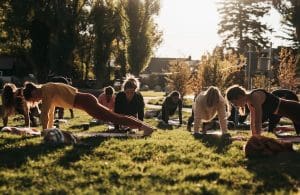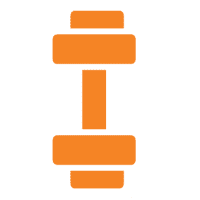Pilates, a renowned exercise method, has evolved over the years, embracing various tools to enhance its effectiveness. One of the key advancements is the integration of machines into Pilates workouts. In this article, we’ll delve into the world of Pilates machines, exploring their history, benefits, and whether they are a necessity for every practitioner.
What are Pilates Machines?
Pilates machines, often known as apparatus, constitute a specialized category of fitness equipment designed to enhance and elevate the practice of Pilates exercises. These apparatuses go beyond traditional mat exercises by incorporating springs, pulleys, and resistance mechanisms, offering a tailored and dynamic workout experience that targets specific muscle groups with precision.
One of the most common Pilates machines is the Reformer, featuring a sliding carriage connected to springs that provide varying levels of resistance. This versatile equipment facilitates a wide array of exercises, allowing for a comprehensive and challenging workout.
The Cadillac, also known as the Trap Table, stands out as a multifunctional apparatus equipped with various attachments to support a diverse range of exercises. Its adaptability makes it a cornerstone in Pilates studios, offering practitioners the flexibility to engage in a multitude of movements.
For those seeking a compact yet effective Pilates experience, the Chair is an ideal choice. With its platform and resistance elements, this piece of equipment facilitates seated exercises, promoting core strength and stability.
The Barrel, available in the form of a spine corrector or a ladder barrel, focuses on enhancing spine flexibility and stretching. This apparatus proves invaluable for practitioners aiming to improve posture and achieve a broader range of motion.
In summary, Pilates machines represent a sophisticated approach to the traditional practice, providing practitioners with a diverse toolkit to target specific muscle groups, enhance flexibility, and promote overall physical well-being. Whether you opt for the Reformer, Cadillac, Chair, or Barrel, incorporating these machines into your Pilates routine can elevate your fitness journey to new heights.

Pilates Reformer in a Studio – A Pilates Reformer is a type of Pilates Machine used at home and in the professional pilates studio
Common Pilates Machines:
Pilates, a holistic exercise method developed by Joseph Pilates, has gained immense popularity for its focus on strengthening the core, enhancing flexibility, and promoting overall well-being. A key element that sets Pilates apart from other fitness regimens is the incorporation of specialized equipment, commonly referred to as Pilates machines or apparatus. These machines play a pivotal role in intensifying and diversifying the Pilates experience, providing practitioners with a comprehensive and targeted approach to fitness.
- Reformer: A Sliding Carriage for Dynamic Resistance The Reformer is a cornerstone of Pilates equipment, featuring a sliding carriage connected to a frame by a set of springs. This apparatus is designed to provide dynamic resistance, allowing practitioners to engage in a wide variety of exercises that focus on building strength, flexibility, and control. The sliding carriage facilitates smooth, controlled movements, making it suitable for individuals at various fitness levels.
- Cadillac (Trap Table): Versatility Redefined The Cadillac, also known as the Trap Table, stands out as one of the most versatile Pilates machines. Its elaborate structure includes a raised platform with a framework of bars, springs, and straps. This apparatus comes equipped with various attachments, such as bars, trapeze, and straps, enabling a diverse range of exercises. The Cadillac is particularly valuable for enhancing flexibility, promoting spinal articulation, and providing assistance or resistance as needed.
- Chair: Compact Elegance for Seated Exercises The Pilates Chair is a compact yet powerful piece of equipment designed for seated exercises. It consists of a platform with resistance elements, providing practitioners with the tools to engage their core, enhance stability, and work on targeted muscle groups. The Chair is known for its efficiency in facilitating challenging exercises in a confined space, making it an excellent choice for those with limited workout areas.
- Barrel: Enhancing Spinal Flexibility and Stretching The Pilates Barrel, available in the form of a spine corrector or a ladder barrel, is specifically crafted to enhance spinal flexibility and stretching. The spine corrector is a curved surface that supports the natural curves of the spine, promoting a healthy posture and spine alignment. The ladder barrel, on the other hand, offers additional versatility with its ladder-like rungs, allowing for a broader range of exercises that target core strength and flexibility.
In conclusion, Pilates machines contribute significantly to the effectiveness and versatility of Pilates workouts. Whether you choose the Reformer for dynamic resistance, the Cadillac for its multifunctionality, the Chair for compact elegance, or the Barrel for spine flexibility, each apparatus brings a unique dimension to your Pilates journey, promoting holistic fitness and well-being.
Do You Need a Machine for Pilates?
While traditional Pilates exercises can be done without machines, the inclusion of apparatus adds variety and challenge. Whether you need a machine depends on your fitness goals, preferences, and the level of intensity you seek.
Without Machines:
- Mat exercises focus on bodyweight resistance, providing a foundation for building strength and flexibility.
- Suitable for beginners or those without access to equipment, mat Pilates allows individuals to master fundamental movements.
- Develops core strength and improves flexibility through controlled, precise movements that engage multiple muscle groups simultaneously.
- Emphasizes mind-body connection, fostering better body awareness and control.
- Can be easily practiced at home or in group settings with minimal space requirements.
With Machines:
- Offers targeted resistance for specific muscle groups, allowing individuals to isolate and strengthen particular areas of the body.
- Pilates Reformer machines, for example, provide spring-loaded resistance, enhancing the challenge and effectiveness of exercises.
- Adds variety and progression to workouts, preventing plateaus and keeping routines engaging.
- Allows for a wide range of exercises and modifications, accommodating various fitness levels and addressing specific needs or limitations.
- Facilitates better alignment and posture correction, as the machines provide support and guidance during movements.
- Ideal for individuals looking to intensify their Pilates practice, the inclusion of machines can elevate the overall workout experience.
- Enables the incorporation of resistance and assistance, catering to both rehabilitation and advanced training goals.
- Provides a dynamic and versatile approach to Pilates, encouraging continuous improvement and adaptation to evolving fitness levels.
- Can be advantageous for those seeking rehabilitative benefits, as machines offer controlled movements with reduced impact on joints.
Ultimately, the decision to incorporate machines into your Pilates practice depends on your individual preferences, fitness objectives, and the level of challenge you desire. Whether you choose mat exercises or opt for the added dimension of apparatus, Pilates remains a versatile and effective method for improving strength, flexibility, and overall well-being.

This Group are doing Pilates without the use of specific Pilates machines, simply using a Pilates mat and stretches for their Pilates session
What is the History of Pilates Machines?
The origin of Pilates machines can be traced back to Joseph Pilates himself. In the early 20th century, Joseph Pilates, a German physical trainer, developed the first Pilates machines to assist injured soldiers in their rehabilitation. The concept evolved over time, with various modifications and additions made to enhance the method’s effectiveness.
Evolution Timeline:
| Year | Milestone |
| 1920s | Joseph Pilates develops the initial Pilates apparatus. |
| 1940s | The Cadillac, Reformer, and Chair are introduced. |
| 21st Century | Technological advancements lead to modern, ergonomic designs. |
if you are interested in the history of Pilates we have an article on when Pilates became so popular and the ups and downs of the history of Pilates. Read the article here.
Pilates with Machines or Without – Which is Easier?
The difficulty level of Pilates, with or without machines, depends on individual fitness levels, preferences, and goals. Both approaches offer unique benefits.
Without Machines (Mat Pilates):
- Easier for Beginners: Mat exercises are generally more accessible for newcomers.
- Focus on Fundamentals: Ideal for mastering the foundational Pilates principles.
- Anywhere, Anytime: Convenient for home or travel workouts.
With Machines (Apparatus Pilates):
- Guided Resistance: Machines provide controlled resistance, making exercises more challenging.
- Varied Intensity: Suitable for all levels, with adjustable resistance to accommodate different fitness levels.
- Enhanced Muscle Engagement: Targets specific muscle groups effectively.

This lady is practacing Pilates in the sand, showing you that Pilates can be practaced almost anwer with or without the need for Pilates Machines
What are the Key Benefits of Using Machines in Pilates?
Incorporating machines into your Pilates routine brings about several advantages that cater to diverse fitness goals.
Benefits of Pilates Machines:
- Targeted Muscle Engagement: Machines offer precise targeting of muscles, aiding in isolation and strengthening.
- Variable Resistance: Adjustable resistance levels cater to different fitness levels and progression.
- Enhanced Range of Motion: Apparatus allow for a broader range of movements, improving flexibility.
- Versatility: Various machines provide a wide array of exercises, preventing workout monotony.
If you would like to read more about the benefits of Pilates for strength training read our in depth article here.
What are the Pros and Cons of Using Machines in a Pilates Workout?
Understanding the advantages and potential drawbacks of using Pilates machines can help you make an informed decision based on your individual needs.
Pros:
| Advantages | Description |
| Targeted Muscle Activation | Machines allow for precise engagement of specific muscle groups, promoting effective strength development. |
| Adjustable Resistance | Variable resistance accommodates different fitness levels and enables progressive intensity. |
| Enhanced Range of Motion | Apparatus facilitate a broader range of movements, contributing to improved flexibility and joint mobility. |
| Versatility | Different machines offer diverse exercises, preventing workout boredom and allowing for continuous progress. |
Cons:
| Drawbacks | Description |
| Cost and Space | Pilates machines can be expensive and may require dedicated space, making them less accessible for some users. |
| Learning Curve | Beginners may find it challenging to master the correct use of machines, requiring guidance from certified instructors. |
| Dependency | Relying solely on machines may limit the ability to perform Pilates in various settings, such as during travel or in a home environment without equipment. |

These ladies are performing Pilates without the use of machines in a room guided by a pilates video. This shows for some Pilates sessions all you need is a Pilates Mat and some guidance.
Pilates Machines for Home Use
The increasing popularity of Pilates has led to the development of home-friendly machines, catering to individuals who prefer the convenience of exercising in their own space.
Popular Home Pilates Machines:
- Foldable Reformers: Compact and foldable for easy storage.
- Portable Chairs: Lightweight and versatile for home workouts.
- Resistance Bands: Provide resistance similar to Pilates machines, suitable for small spaces.
Considerations for Home Machines:
- Space: Choose equipment that fits your available space.
- Budget: Explore options that align with your financial considerations.
- Versatility: Opt for machines that offer a variety of exercises to keep your workouts dynamic.
Types of Machines for Pilates Classes and What Do They Each Do?
Pilates studios often feature a variety of machines, each serving a specific purpose to provide a comprehensive workout experience.
Common Pilates Machines in Classes:
- Reformer:
- Targets full body with emphasis on core engagement.
- Adjustable springs for varying resistance levels.
- Supports a range of exercises, including leg presses and arm work.
- Cadillac (Trap Table):
- Versatile apparatus with multiple attachments.
- Enables exercises for stretching, strengthening, and flexibility.
- Suitable for users of all fitness levels.
- Chair:
- Compact equipment focusing on core strength and balance.
- Incorporates resistance for both upper and lower body exercises.
- Ideal for challenging advanced practitioners.
- Barrel:
- Enhances spine flexibility and stretches.
- Comes in different types, such as the spine corrector and ladder barrel.
- Targets the back and abdominal muscles effectively.
Can You Do Pilates Without Any Machines or Equipment?
Absolutely! Pilates originated as a mat-based exercise method, and many practitioners find success and satisfaction in practicing without machines (although you will want to invest in a good Pilates mat to keep you supported).
Mat Pilates Advantages:
- Accessibility: Requires minimal equipment, making it accessible to a broader audience.
- Bodyweight Resistance: Develops strength using one’s own body weight.
- Versatility: Can be performed virtually anywhere, promoting consistency.
Mat Pilates Exercises:
- Hundred: A foundational exercise focusing on core activation.
- Roll-Up: Strengthens the abdominals and improves spine flexibility.
- Plank Variations: Engages the entire body, especially the core and upper body.

This Pilates group is using the outdoors for their Pilates sessions without any pilates machines or equipment apart from a mat and their own bodyweight.
Should I Invest in a Pilates Machine?
Deciding whether to invest in a Pilates machine depends on your personal preferences, fitness goals, and budget.
Considerations Before Investing:
- Fitness Goals: Machines are beneficial for targeted muscle development and progressive resistance.
- Budget: Evaluate the cost of the machine against your financial capacity.
- Space: Consider the available space in your home for equipment storage.
- Experience Level: Beginners may start with mat Pilates before transitioning to machines.
Conclusion
Pilates, whether with or without machines, offers a holistic approach to fitness, focusing on strength, flexibility, and mindful movement. The choice between mat and apparatus Pilates ultimately depends on individual preferences, fitness goals, and accessibility. Whether you opt for the simplicity of mat exercises or the versatility of machines, the key is to embrace a consistent practice that aligns with your lifestyle and promotes overall well-being, and health. Learn about how pilates can help reduce belly fat here to learn of one of the fastest ways to use Pilates and Pilates machines to tone your tummy!








